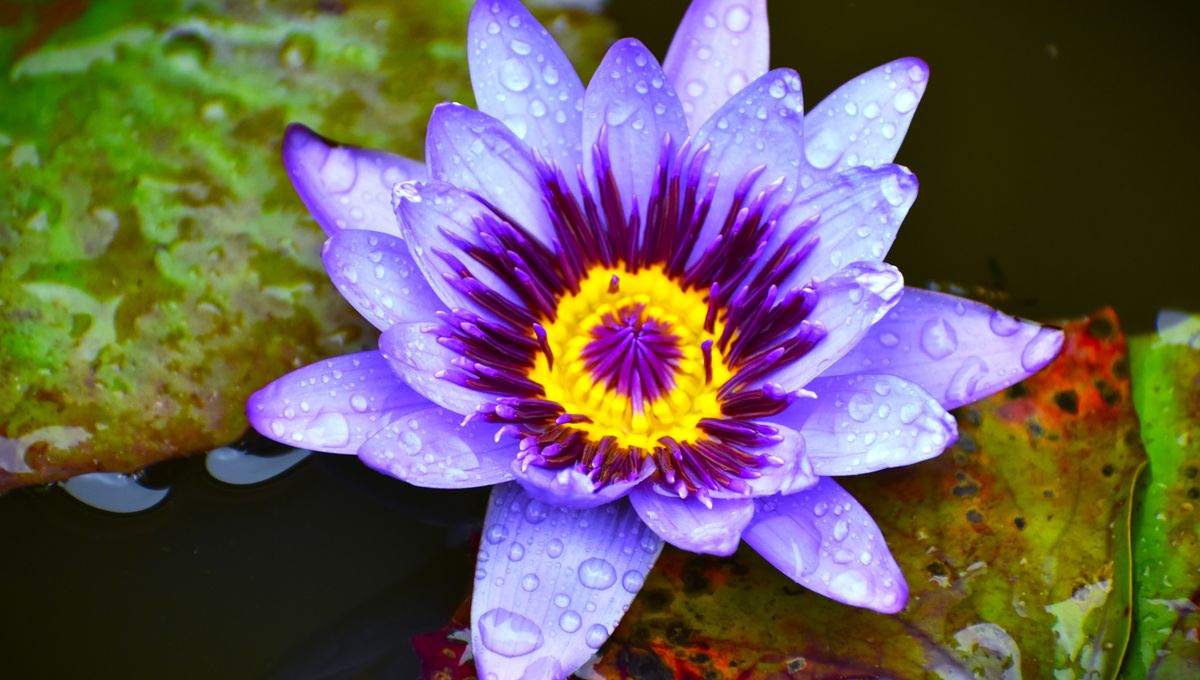
When Howard Carter famously discovered the tomb of Tutankhamun in 1922, he found the pharaoh’s body covered in the petals of a type of water lily known as the blue lotus. Containing two psychoactive alkaloids, the flower produces hallucinatory effects and is thought to have been ingested during erotic ancient rituals in which participants sought to commune with the god Hathor.
ADVERTISEMENT
As the god of love and drunkenness, Hathor was said to provide a connection to the spiritual realm via ecstatic experiences and was the focal point of a popular cult that engaged in week-long festivals of drinking, dancing, and love-making. Some scholars have even suggested that young female devotees of Hathor may have been deflowered with wooden phalluses that were then offered to the god at the royal necropolis of Deir el-Bahari.
Egyptologists think that these riotous rituals were fueled by wine that had been infused with psychedelic blue lotus. Evidence for this practice comes from ancient sources such as the Turin Papyrus, which depicts the flower above the heads of women engaging in erotic acts.
Recent chemical analyses of the blue lotus (Nymphaea caerulea) have revealed that it contains the psychoactive compounds apomorphine and nuciferine, both of which influence dopamine and serotonin signaling to produce their trippy effects. In 2000, apomorphine was recognized for its potential as a treatment for erectile dysfunction and impotence, suggesting that the ancient Egyptians may have been onto something when they used the flower to heighten their sensuality.
It’s also noteworthy that the ancient Maya used to revere a related plant called Nymphaea ampla in a similar way. Researchers think these two varieties of water lily may have had comparable effects on consciousness and sexual arousal, leading to strikingly similar practices and beliefs in Nubia and Mesoamerica.
Yet the Egyptians didn’t just use the blue lotus for sex. Medical papyri mention the flower as an ingredient in various concoctions designed to treat liver and stomach illnesses, and even as an edema.
The blue lotus is also namechecked numerous times in the Egyptian Book of the Dead and is believed to have been used during funerary rites. For instance, some of the spells in this famous mortuary text highlight the flower’s association with rebirth and immortality, and its presence in royal tombs may represent a connection between the pharaohs and the gods.
ADVERTISEMENT
Sadly, though, authentic Egyptian blue lotus is extremely hard to come by these days. The construction of the Aswan dam on the Nile has been credited with destroying the plant’s native habitat, leading to its classification as a threatened species.
Despite this, blue lotus products are widely advertised and sold online, often as sleep aids or calming remedies. However, a recent analysis by researchers at the University of California, Berkeley found that this merchandise typically doesn’t contain blue lotus, but consists of a lookalike variety of water lily that has far lower nuciferine levels and no psychoactive properties.
Hathor, one imagines, would not approve.
Source Link: What Is Egyptian Blue Lotus, The Rare Plant Used In Ancient Psychedelic Sex Rituals?